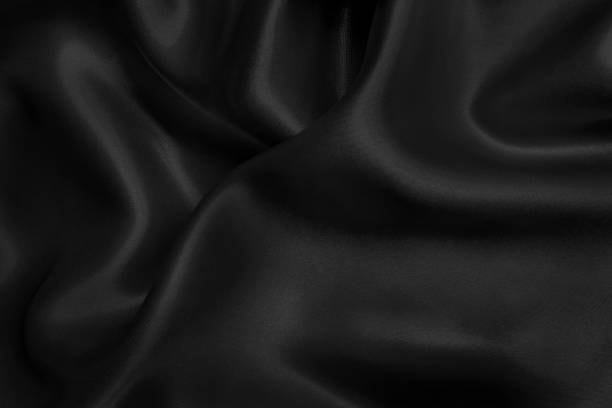
People value satin weave and sateen mainly because they provide a smooth tactile sensation and classy appearance at the same time. Although the phrases share similar wording, they actually reflect opposite fabric kinds.
Satin weave along with sateen maintains high value because they offer both luxurious touch and elegant appearance. Knowledge about the particular characteristics between satin weave and sateen enables you to choose suitable fabric types for specific purposes.
The guide presents explanations of satin fabric building blocks together with a comparison between satin and sateen fabrics while discussing their appropriate care methods. The acquisition of information in this guide will enable you to pick the proper fabric for either fashion or domestic applications.
What Is Satin Weave?
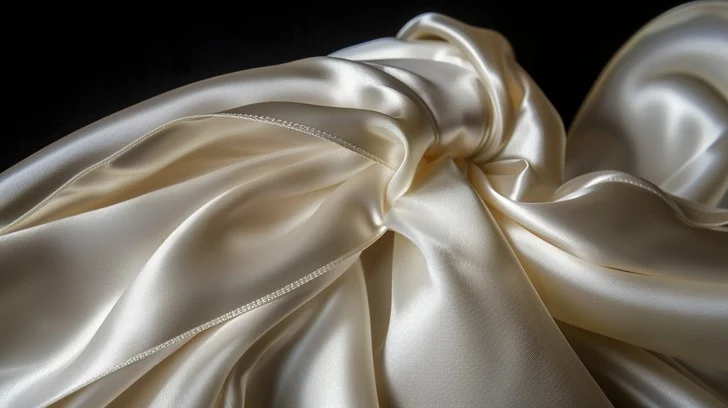
Let’s start with the foundation: satin weave.
Weave describes how thread dimensions connect to form a fabric structure. You can find satin weave items made in plain weave, twill weave and satin weave patterns. A plain weave produces strong cotton poplin fabric yet satin weave makes smooth luxurious materials.
For satin weaving the horizontal weft threads ride from one to multiple vertical warp threads with at least four threads across and one under. When warp threads float above other warp threads the number of fabric interlacing decreases to produce:
- A smooth, glossy front
- A dull, matte back
Long interweaving threads reflect more light to produce satin shine and hang properly.
Why does this matter? The fabric weave determines its appearance as well as its physical behaviour and surface texture. When used for fabrication satin creates fabrics that feel smooth at the touch with graceful flow yet reflect light. Because of these characteristics satin fiber appears in fancy attire and underwear plus expensive home textiles.
Foundations in satin weave are slacker than plain weave fabric patterns so they twist more easily and may cause threads to break easier. People appreciate satin fabrics for their luxury feel more when they are correctly treated.
What Is Satin Made Of?
Many people have a basic question about satin composition.
Satin stands for the cloth structure not the material type. Satin can exist in many textile materials because each source produces unique sensory and cost attributes.
Common satin materials:
- Silk: The original satin fibre. Silk satin feels smooth and natural while allowing breathability because of its extreme luxury. Designers and bedding producers commonly select satin for upscale fashion items and top-quality bed linens.
- Polyester: Polyester makes satin at affordable prices. The fabric polyester satin displays both smooth texture and somewhat stiffer movement than silk. People use it in professional outfits, clothing protectors and house design.
- Nylon: Nylon forms a strong lightweight satin texture that performs well for many uses. People typically use satin to design underwear, workout wear and performance costumes.
Natural vs Synthetic Satin:
- Natural fabrics such as silk satin rank high because it allows air through while feeling fantastic against the skin and comes from a sustainable source when cultivated properly. This fabric type requires care and is priced at a higher cost.
- Synthetic fibers substitutes bring lower prices along with wrinkle resistance and effortless maintenance which makes them successful in all-purpose clothing and home textile applications.
Your selection of material majorly influences fabric cost and determines surface texture weight and endurance. Satin fabrics made from silk experience a silky smooth coolness but synthetic materials exhibit a chicer touch to the touch.
What Is Sateen?
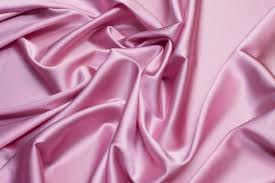
The next topic we need to explain involves sateen and its properties.
Sateen represents the cotton textile variation of the satin weave technique.
Sateen matches the satin weaving style with cotton fibers as its main ingredients.
Sateen creates a soft flowing fabric texture with faint shine but less luster than satin weave. Customers find the fabric’s soft and fluffy texture especially suitable for sleeping and everyday wear in fabrics.
Cotton fabric serves as the natural material source behind sateen.
- Breathable
- Absorbent
- Comfortable against the skin
The material endures better than fragile silk satin while remaining easy to maintain thereby making it suitable for regular use.
Cotton Sateen: A Luxurious Everyday Fabric
Traditional cotton sateen stands as the most common version of sateen fabric which people call sateen weave cotton.
When cotton yarn producers weave their threads according to the satin design they create cotton sateen fabric. The result? Boasting breath-ability along with softness and gentle sheen characteristics this fabric provides.
Benefits of cotton sateen:
- Breathable: Small air passages through cotton fibres allow your body to stay cool because air circulation occurs naturally throughout the material.
- Durable: Regular washing and typical use will not damage this textile since it surpasses many delicate satin in durability.
- Soft sheen: Offers an elegant appearance without the high gloss of satin.
Where you’ll see cotton sateen:
- Bedding: Sheets, duvet covers, pillowcases. Cotton sateen sheets are known for their silky touch and slight shimmer, making them a favourite in luxury bedding.
- Clothing: Dresses, skirts, trousers, and shirts. The texture of cotton sateen works as a suitable material for clothing that must maintain its shape while feeling gentle against human touch.
- Upholstery and decor: Cushions, drapery, and light upholstery projects. The fabric communicates elegance through its smooth surface together with its elegant sheen which enhances home interiors.
The combination of elegance with functional advantages positions cotton sateen as an attractive selection for buyers who desire stylish items with comfort features.
Sateen vs Satin: Key Differences
The fabric structures between sateen and satin remain similar but other essential characteristics clearly separate these two materials.
Let’s break it down.
| Feature | Sateen | Satin |
| Material | Cotton | Silk, polyester, or nylon |
| Appearance | Soft sheen, matte glow | High gloss, reflective shine |
| Feel | Smooth, weightier, slightly warm | Slippery, fluid, cool to the touch |
| Durability | Strong, resists pilling and wrinkling | Delicate (silk), wrinkle-resistant (polyester) |
| Care | Easy to machine wash and dry cleaning | Gentle clean; may need air-drying |
| Best Uses | Everyday bedding, casual wear, upholstery | Evening gowns, lingerie, formal decor |
| Price | Moderate; accessible luxury | Wide range, from budget to high-end |
Material Matters
Sateen is all about cotton fiber. Satin usually works with silk or artificial fabric strands. The distinction in fabric types controls every element from cost to results.
Look and Feel
Satin creates a magnificent glossy surface. People who prefer discreet luxury prefer sateen because it provides subdued lustrous finish.
Care Needs
Your fabrics have different care requirements as satin need special attention and sateen requires basic maintenance.
When to Choose Satin and When to Choose Sateen
These fabrics work best depending on what you require from your textile selection.
Choose satin when you want:
- Glamour: Satin delivers its best features in attire for night events and wedding gowns because it keeps its shine and flows softly while matching lingerie.
- Luxury accents: Satin works best for soft furnishings including decorative pillows and drapes that need to stand out as high-end accents.
- Formal occasions: Satin elevates any outfit or room with its show-stopping elegance.
Choose sateen when you want:
- Comfort and practicality: Sateen works great as day-to-day bedding since it offers both pleasant touch and durable quality.
- Casual luxury: Sateen clothing materials appear elegant yet remain strong enough to handle everyday usage.
- Accessible price points: Sateen lets customers enjoy luxurious satisfaction without high costs.
Shopping Tips:
- Verify the thread count to select the right type of bedding. A sateen weave with a thread count of 300–600 offers the best balance of softness and durability.
- The smooth and low-pilling long-staple cotton sateen material is a practical choice for clothing.
- Select the fabric that suits your needs between silk satin for airflow and polyester satin for maintenance.
How to Care for Satin and Sateen Fabrics
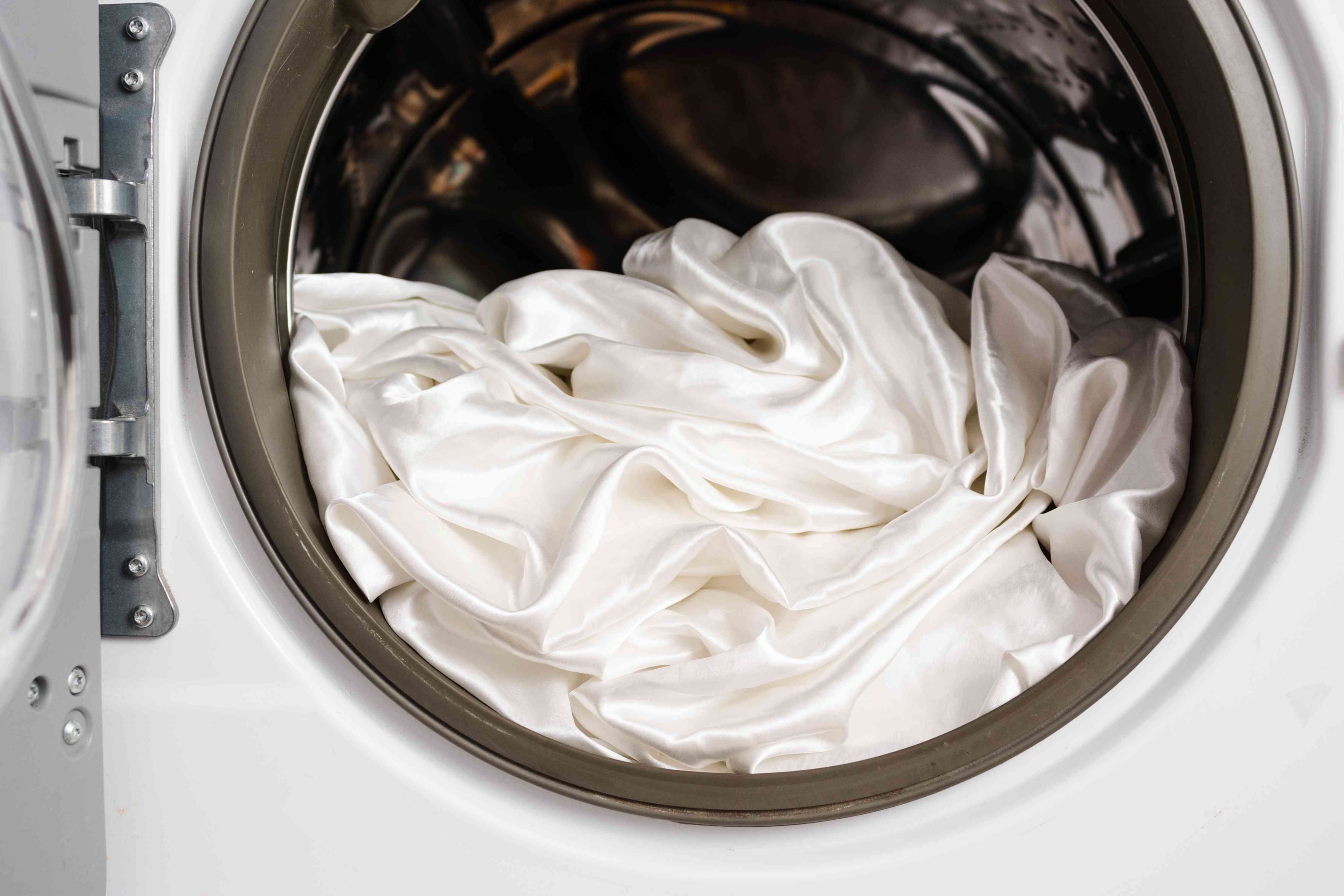
Keep your satin in good condition through proper care instructions.
Caring for Satin:
- Washing: Hand wash in cold water with gentle laundry detergents. Choose the delicate washing cycle and use a mesh laundry bag when washing satin using a machine.
- Drying: Let your satin items air-dry or use the lowest setting of your tumble dryer.
- Ironing: Warm air from the iron should reach the fabric through the opposite side. Applying a cloth between the iron and fabric prevents shiny marks from appearing.
Caring for Sateen:
- Washing: Put satin pieces through gentle machine wash in water that is neither hot nor cold using gentle detergents.
- Drying: Place clothes in the dryer at low or medium spin speed. Remove promptly to avoid wrinkles.
- Ironing: Benefit from a safety layer when applying the iron with medium temperature to the cloth’s backside.
Pro tip: Stay away from bleach and tough chemicals since they make fabric deterioration speed up and reduce lustre.
The right maintenance practices will help satin and sateen keep their soft and luxurious feel and excellent appearance while enduring for a long time.
The History and Evolution of Satin and Sateen
These luxury fabrics possess long histories that illustrate how fashion, social beliefs and technological advances affected their development.
Satin first emerged in Middle Age China and early artisans made it only with pure silk fibres. People valued satin for its elegant surface glow and silky fabrics. People think the word satin relates to medieval Zaitun or Quanzhou since that was the city where traders shipped silk satin across European shores. Satin grew popular on both sides of Europe when people of high rank started dressing and decorating in it.
Since sateen appeared after the invention of satin. The fabric emerged to meet customers’ needs who wanted satin’s qualities at lower costs. Manufacturers found a way to create fabric that appeared like satin without its high price through a weave technique using cotton fibres. From the 1800s through 1900s manufacturers used sateen widely for household textile products especially for bedding and drapery.
The progress in textile production changes silk satin together with sateen throughout modern times. The market predominantly uses polyester or nylon-based satin for commercial purposes although silk satin remains obtainable. Significant quantities of sateen remain selected by people who want everyday luxury which particularly includes linens for their beds.
The knowledge of these fabrics’ historical development provides enhanced value during the selection of satin or sateen products for household or personal use.
Final Thoughts: Satin and Sateen Both Have Their Place
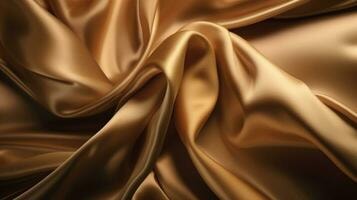
The fabrics satin and sateen provide eternal popularity because they present distinctive advantages to users.
- Satin creates a shimmering appearance that suits special events along with luxury fashion elements.
- Sateen provides you with everyday comfort through its luxurious feel so it serves as perfect fabric for both bed sheets and relaxed clothing.
The selection between these fabrics requires consideration of fabric usage locations and expected wear and cleaning schedules alongside personal care commitments.
The Yanmao Textile team brings together the diverse attributes of these textiles which we admire for their multiple qualities. Our extensive experience allows us to connect with major worldwide brands and produce outstanding fabric alternatives including woven, knitted, functional, and decorative designs.
Ready to explore more? We invite you to visit our website that will lead you to the right fabric choice for your upcoming project. Our company exists to support all people from home shoppers to fashion students and designers who wish to make extraordinary outcomes.
Want help choosing the right fabric for your needs? Explore our fabric collections and guides at Yanmao Textile.





